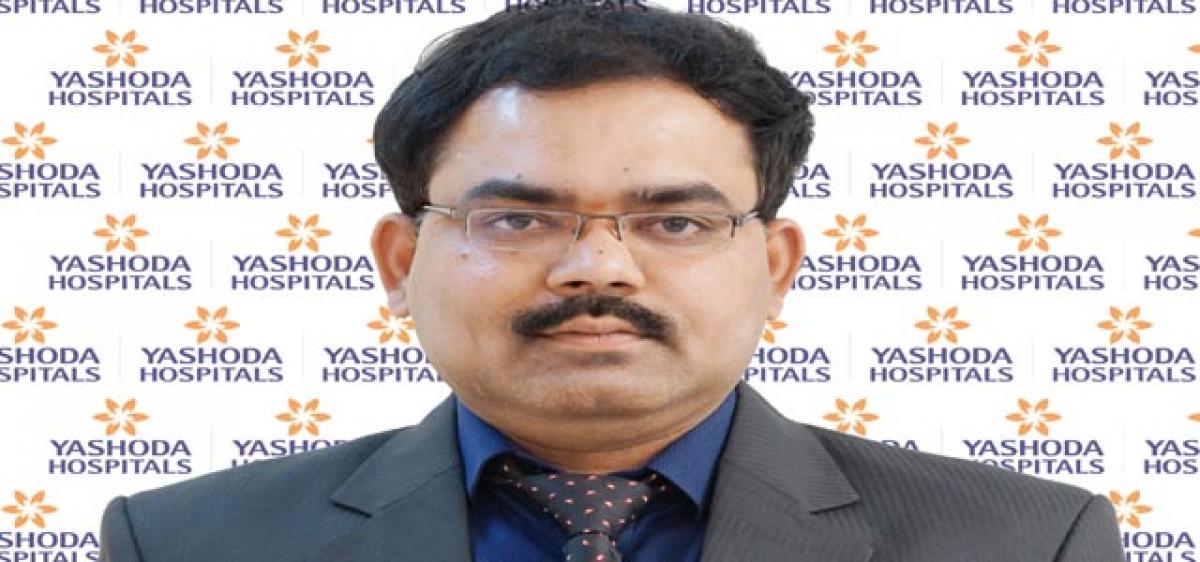Live
- 555th Prakash Purab celebrated with gaiety
- Good news for Atmakur farmers
- High-risk aortic valve replacement surgery performed successfully
- HMWSSB MD holds review meeting on OTS-2024 scheme
- Dhobi Ghat assessed for potential to host sports complex
- SCR bets on LHB train coaches for safety
- SVU felicitates best teachers
- Tata Group to market Araku coffee
- Union Min assures development of infra in tribal mandals
- KTR, Harish will turn political rivals soon: TPCC Chief
Just In

Tuberculosis is one of the major public health problems in our country. According to WHO estimates, India has the world\'s largest tuberculosis epidemic and accounts for 2.8 million of the 10.4 million new tuberculosis cases globally every year.
Tuberculosis is one of the major public health problems in our country. According to WHO estimates, India has the world's largest tuberculosis epidemic and accounts for 2.8 million of the 10.4 million new tuberculosis cases globally every year.
According to the World Health Organisation Global TB Report 2016 released during last October, which revised and raised its global estimates in 2016 after improved surveillance data from India registered a 34 percent spike in new cases.
The bacterium that causes TB is called Mycobacterium tuberculosis. Inactive tuberculosis, means that one can even unconsciously and unknowingly acquire the bacteria for tuberculosis within them but not even know about it because it is inactive.
Whereas, active tuberculose the start of the bacteria developing, and the signs and symptoms begin to be visible. “This is when tuberculosis is active within an individual and is a serious issue leading to even more serious results.” Although the TB bacteria can infect any organ (e.g., kidney, lymph nodes, bones, joints) in the body, the disease commonly occurs in the lungs.
People living with HIV (PLHIV), people who are malnourished, who have diabetes or cancer, and people on steroid therapy more prone to TB. “They should be regularly screened for signs and symptoms suggestive of TB.
Common symptoms include coughing that lasts longer than 3 weeks with green, yellow, or bloody sputum. Otherwise unexplainable weight loss and fatigue. Night fever and sweats. Chest pain and shortness of breath. Loss of appetite.” said Dr C Ugandhar Bhattu, senior pulmonologist Yashoda Hospital Malakpet.
There are a number of diagnostic TB tests currently available. Based on which doctors decide treatment for the disease. They are as follows. Microbiological confirmation on sputum: All patients who have presumptive (that is are presumed to have) TB and who are capable of producing sputum, should undergo a sputum test for rapid microbiological diagnosis of TB.
These are two type of test
1) LJ (solid) Method
2) MGIT (liquid) Method
Chest X-ray as a screening: Where available chest X-ray should be used as a screening tool. Cartridge-Based Nucleic Acid Amplification Test (CB NAAT): The CB NAAT is known as the GeneXpert in most countries. This is the preferred first diagnostic test in children and people with TB and HIV co-infection.
In spite of treatment being available with good results several thousand(40 percent of total) TB patients do not seek treatment. Half of the rest across India stop treatment in the middle because their malnourished bodies cannot cope with the acute side effects, which range from loss of appetite, nausea, vomiting, burning stomach to skin rash, jaundice and burning.
“Not completing the full course of medication which takes at least 6 to 8 months for uncomplicated TB leads to drug resistance, making the infection more difficult to treat,” warned Dr C Ugandhar Bhattu. Stopping treatment midway is a major reason why around 3 Lakh people in India die each year from this respiratory infection.
It is a well-known fact that bacterial infections require antibiotics for treatment and prevention, thus, commonly you will see that patients diagnosed with tuberculosis have certain pills and antibiotics carried around with them. “It is crucial to take medication as instructed by the doctor, and for the full course of the treatment (months or years).
This helps to ward off types of TB bacteria that are antibiotic-resistant, which take longer and are more difficult to treat.” Yashoda Hospital’s senior pulmonologist has emphasised India has a large burden of the world's TB, one that this developing country can ill afford, with an estimated economic loss of US $43 billion (Rs 2,88,100 Crore) annually directly due to this disease.
Treatment in India is on the rise just as the disease itself is on the rise. To prevent spreading TB, it's important to get treatment quickly and to follow it through to completion by the doctor. This can stop transmission of the bacteria and the appearance of antibiotic-resistant strains.
By Dr Ugandhar Bhattu

© 2024 Hyderabad Media House Limited/The Hans India. All rights reserved. Powered by hocalwire.com







